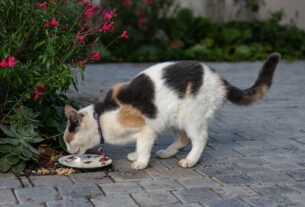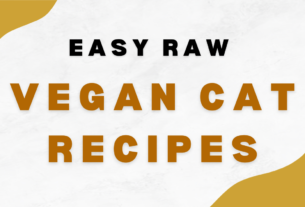So, today we are going to share with you a list of the 8 best Homemade cat food recipesfor abscess recovery in cats.
Table of Contents for Homemade Cat Food Recipes for Abscess
When your cat is recovering from an abscess, proper nutrition is crucial for healing and regaining strength. Homemade cat food recipes for abscess offer a way to provide fresh, nutrient-rich meals that support immune function, tissue repair, and hydration. This guide covers what your cat needs during recovery and provides eight easy, vet-friendly recipes with clear instructions to help your furry friend heal faster.
Why Homemade Cat Food for Abscess Recovery?
Abscesses are painful, pus-filled swellings caused by bacterial infections, often from bites or scratches. During recovery, cats may have a reduced appetite and need extra support from their diet. Homemade cat food recipes for abscess allow you to:
- Control ingredients and freshness
- Customize texture and flavor for picky eaters
- Include nutrients that promote healing and immune health
Key Nutritional Needs for Cats with Abscesses
- High-quality protein: Supports tissue repair (chicken, turkey, fish, eggs)
- Healthy fats: Provide energy and reduce inflammation (fish oil, flaxseed oil)
- Vitamins and minerals: Zinc, vitamin A, vitamin E, and selenium are important for healing
- Hydration: Wet foods and broths help maintain fluid balance
You should also check – Is Raw Vegan Cat Food Right for Your Kitty?
1. Chicken and Rice Recovery Stew
Ingredients:
- ½ lb boneless, skinless chicken breast
- ⅓ cup cooked white rice
- 1 hard-boiled egg
- 2 tsp fish oil (or substitute with 1 tsp olive oil)
- ½ cup low-sodium chicken or bone broth
Instructions:
- Cook the Chicken: Boil chicken breast in water until fully cooked (about 15 minutes). Let cool and shred into small pieces.
- Prepare the Egg: Boil egg for 10 minutes, cool, peel, and mash.
- Combine: In a bowl, mix shredded chicken, rice, and mashed egg.
- Add Oil & Broth: Drizzle fish oil and add broth to create a stew-like consistency.
- Serve: Offer slightly warm to encourage eating.
2. Salmon and Pumpkin Mash
Ingredients:
- ½ cup cooked or canned salmon (boneless, no salt)
- 2 tbsp plain pumpkin puree (not pie filling)
- ¼ cup cooked oatmeal (optional)
- ½ tsp flaxseed oil
- ½ cup bone broth
Instructions:
- Prepare Salmon: Bake or steam salmon until cooked; flake and remove bones. If using canned, drain and check for bones.
- Mix: Combine salmon, pumpkin, and oatmeal in a bowl.
- Add Oil & Broth: Stir in flaxseed oil and enough broth to make a soft mash.
- Serve: Serve at room temperature.
3. Turkey and Vegetable Medley
Ingredients:
- ½ lb ground turkey
- ¼ cup carrots (peeled, chopped)
- ¼ cup green beans (chopped)
- ⅓ cup cooked brown rice
- 1 cooked egg yolk (hard-boiled)
- 1 tsp fish oil
- ½ cup bone broth
Instructions:
- Cook Turkey: Brown turkey in a nonstick pan until no longer pink. Drain excess fat.
- Prepare Veggies: Steam carrots and green beans until soft, then chop finely.
- Mash Egg Yolk: Hard-boil an egg, peel, and mash the yolk.
- Combine: Mix turkey, veggies, rice, and egg yolk.
- Add Oil & Broth: Stir in fish oil and broth for moisture.
- Serve: Offer slightly warm.
4. Mackerel and Egg Recovery Blend
Ingredients:
- 1 cup cooked or canned mackerel (in water, drained, bones removed)
- 1 hard-boiled egg (chopped)
- 2 tbsp cooked brown rice
- 1 tbsp sunflower oil
- ¼ cup chicken broth
Instructions:
- Prepare Mackerel: Drain and flake mackerel, removing all bones.
- Chop Egg: Hard-boil egg, peel, and chop.
- Mix: Combine mackerel, egg, and rice in a bowl.
- Add Oil & Broth: Stir in sunflower oil and broth to moisten.
- Serve: Serve at room temperature.
5. Tuna and Sweet Potato Comfort Bowl
Ingredients:
- ½ cup canned tuna in water (no salt, drained)
- ¼ cup cooked sweet potato (mashed)
- 1 tsp olive oil
- ¼ cup bone broth
Instructions:
- Prepare Sweet Potato: Peel, boil, and mash sweet potato.
- Mix: Combine tuna and sweet potato in a bowl.
- Add Oil & Broth: Add olive oil and broth, mixing to a soft consistency.
- Serve: Serve slightly warm.
6. Chicken Liver and Rice Nourish Mix
Ingredients:
- ¼ lb chicken liver (rinsed)
- ¼ lb boneless, skinless chicken thigh
- ⅓ cup cooked white rice
- 1 tsp fish oil
- ½ cup chicken broth
Instructions:
- Cook Meats: Boil chicken thigh and liver together until cooked through (about 10–12 minutes). Let cool, then chop finely.
- Mix: Combine chopped meats and rice in a bowl.
- Add Oil & Broth: Stir in fish oil and broth for moisture.
- Serve: Offer at room temperature.
7. Turkey and Pumpkin Digestive Aid
Ingredients:
- ½ lb ground turkey
- 2 tbsp plain pumpkin puree
- ¼ cup cooked oatmeal
- 1 tsp flaxseed oil
- ½ cup bone broth
Instructions:
- Cook Turkey: Brown ground turkey in a nonstick pan, drain fat.
- Mix: Combine turkey, pumpkin, and oatmeal.
- Add Oil & Broth: Stir in flaxseed oil and broth to desired consistency.
- Serve: Serve slightly warm.
8. Healing Bone Broth Supplement
Ingredients:
- 1–2 lbs raw, unseasoned bones (chicken, turkey, or beef)
- 6–8 cups water
Instructions:
- Simmer: Place bones in a large pot, cover with water, and bring to a boil. Reduce heat and simmer for 8–12 hours.
- Cool & Strain: Let broth cool, then strain out all solids and discard bones.
- Serve: Offer a few spoonfuls with meals or as a treat to boost hydration.
Feeding and Transition Tips
- Transition Gradually: Mix homemade food with your cat’s current diet, increasing the homemade portion over 5–7 days.
- Serve Small, Frequent Meals: This is easier on the stomach and encourages eating.
- Warm Food Slightly: Enhances aroma and appeal.
- Avoid Harmful Foods: Never use onions, garlic, grapes, raisins, or chocolate.
- Consult Your Vet: Especially if feeding homemade diets long-term or if your cat has other health issues. Ask about supplements like taurine and calcium.
Frequently Asked Questions
Can I use raw meat in these recipes?
For cats recovering from abscesses, it’s safest to use cooked meats to avoid bacteria that could worsen infection.
How long can I store homemade cat food?
Store in the fridge for up to 3 days or freeze portions for up to 2 months. Always thaw in the fridge, not at room temperature.
Is it okay to use canned fish?
Yes, but ensure it’s packed in water with no added salt or flavorings, and always remove bones.
Should I add supplements?
For short-term recovery, these recipes are suitable, but for long-term feeding, consult your vet about adding taurine, calcium, and a feline multivitamin.
Conclusion
Homemade cat food recipes for abscess recovery can make a big difference in your cat’s healing journey. By focusing on high-quality protein, healthy fats, hydration, and essential vitamins, you’ll help your cat regain strength and comfort. Always consult your vet before making major diet changes, and use these easy, step-by-step recipes to provide the best care for your feline friend. With the right nutrition and lots of love, your cat will be back to their healthy, playful self in no time.




